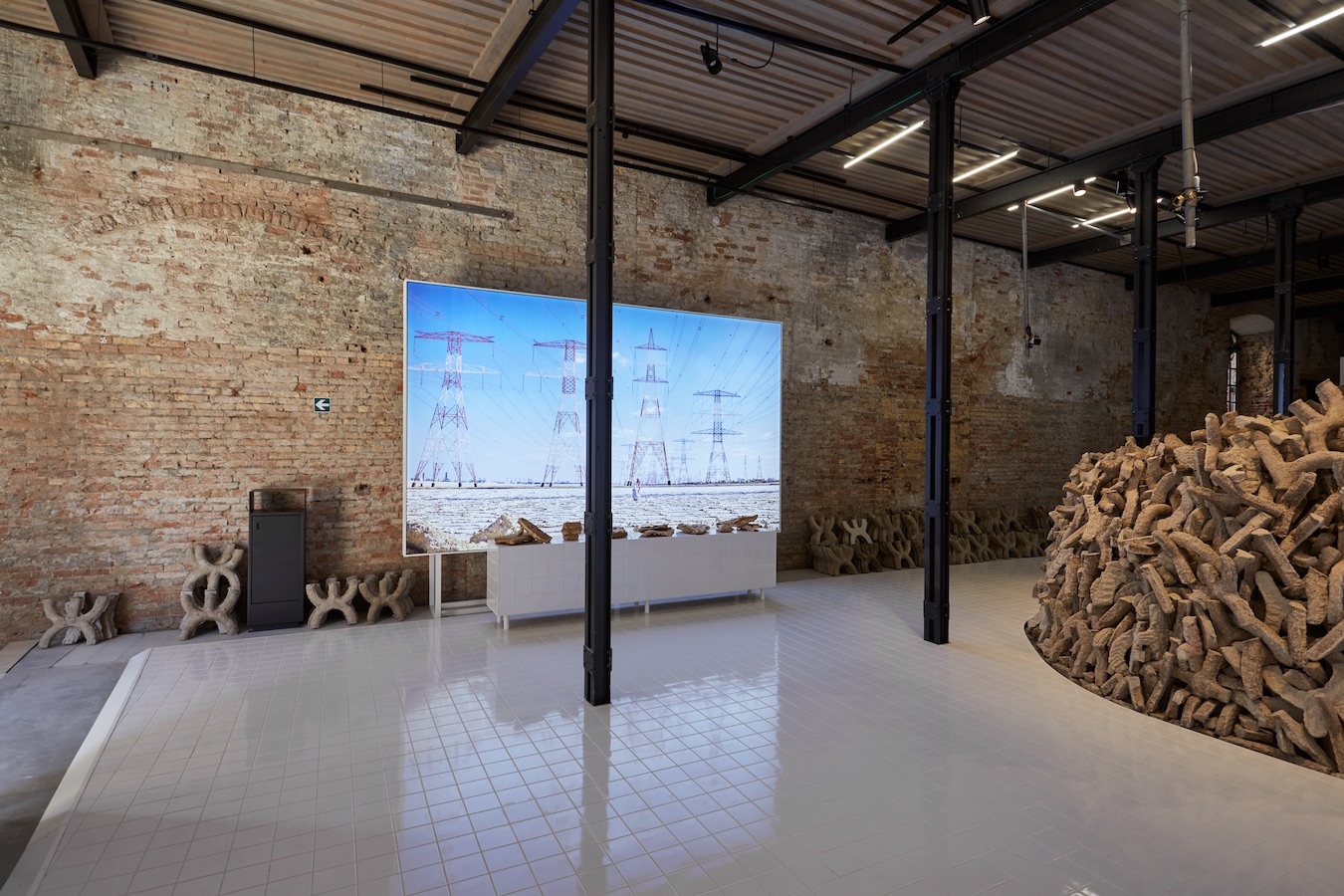DUBAI: The theme of the 2021 Venice Biennale of Architecture is ‘How will we live together? The question — posed by curator Hashim Sarkis — resonates deeply as the COVID-19 pandemic continues.
In response, the curators of the UAE Pavilion — architects Wael Al-Awar and Kenichi Teramoto — present “Wetlands,” which includes a structure that explores sea salt as a locally sourced building material.
Standing 2.7 meters tall with a 7 x 5 meter base, the structure offers an interior space that visitors can easily enter. It was built using MgO cement, made from brine left over from industrial desalination processes, a resource that is abndant in the UAE, and which has the strength and durability to be used in modern architecture.

Standing 2.7 meters tall with a 7 x 5 meter base, the structure offers an interior space that visitors can easily enter. (Supplied)
“As architects, we have a responsibility to question the damaging practices of the construction industry, and search for more sustainable alternatives,” Al-Awar told Arab News. “This exhibition aims to call into question the materials we are using and the processes of modern architecture.”
The pavilion also offers an exercise in how to build sustainably while incorporating local heritage. Its organic shapes are inspired by the UAE’s traditional vernacular of coral-built houses and the mineral-rich sabkhas (salt flats) that are part of the country’s wetlands. The pavilion includes a number of large images of sabkhas by New York-based Emirati artist Farah Al-Qasimi.
“They are one of the UAE’s richest and most unique geological features, and a really fascinating phenomenon,” Al-Awar says of sabkhas. “For example, they can absorb more carbon dioxide per square meter than the rainforest. But our understanding of them is in its very early stages. Through our research, we found a way to recreate the sabkhas’ salt and mineral compounds in a lab and transform them into a recycled building material without damaging the sabkhas at all.”

“Wetlands” includes a structure that explores sea salt as a locally sourced building material. (Supplied)
It’s not the first time the sabkhas have been used in architecture. Blocks were hewn from the hundreds of salt pools spread throughout the Siwa Oasis in Egypt’s western desert to create the salt-based brick buildings found in the medieval town of Shali, located east of the Libyan border.
The cement industry reportedly currently accounts for 8 percent of all greenhouse-gas emissions.
“We have developed an alternative construction material that is equivalent in scale, cost and strength to Portland cement but without this high environmental impact,” says Al-Awar. “Our proposed cement alternative would mitigate this harmful environmental issue. Our research has enabled us to develop a proof of concept showing that locally sourced salt-based cement is a viable, scalable alternative.”

The cement industry reportedly currently accounts for 8 percent of all greenhouse-gas emissions. (Supplied)
This is the seventh time that the UAE has participated in the Venice Biennale of Architecture, each time offering innovative modern structures that draw from the nation’s architectural heritage and desert landscape. The UAE’s first pavilion, in 2014 — “Lest We Forget: Structures of Memory in the UAE,” curated by Dr. Michele Bambling — examined how public and residential architecture shaped the country. “Transformations: The Emirati National House” in 2016, curated by Yasser Elsheshtawy, explored the transformative aspect of the housing model of Emirati National Houses known as sha’abi (folk) houses. In 2018, curator Dr. Khaled Alawadi spotlighted the UAE’s unique form of urbanism through “Lifescapes Beyond Bigness.”
“The pandemic has demonstrated how vital it is for people to engage with issues like climate change through art and culture,” Laila Binbrek, the UAE pavilion’s coordinating director, told Arab News. “As such, we have collectively acknowledged the anthropological necessity for art and culture in our lives, especially as we withstand the challenges presented by the pandemic.”
And, as Al-Awar points out, there has been a creative and philosophical shift because of the pandemic.
“We have inevitably seen a shift in creative production in a world with limited access to physical spaces and travel,” he tells Arab News. “However, it has also pushed us to open new dialogues and approach our work more creatively, with a focus on impact, not process.”







0 التعليقات:
إرسال تعليق